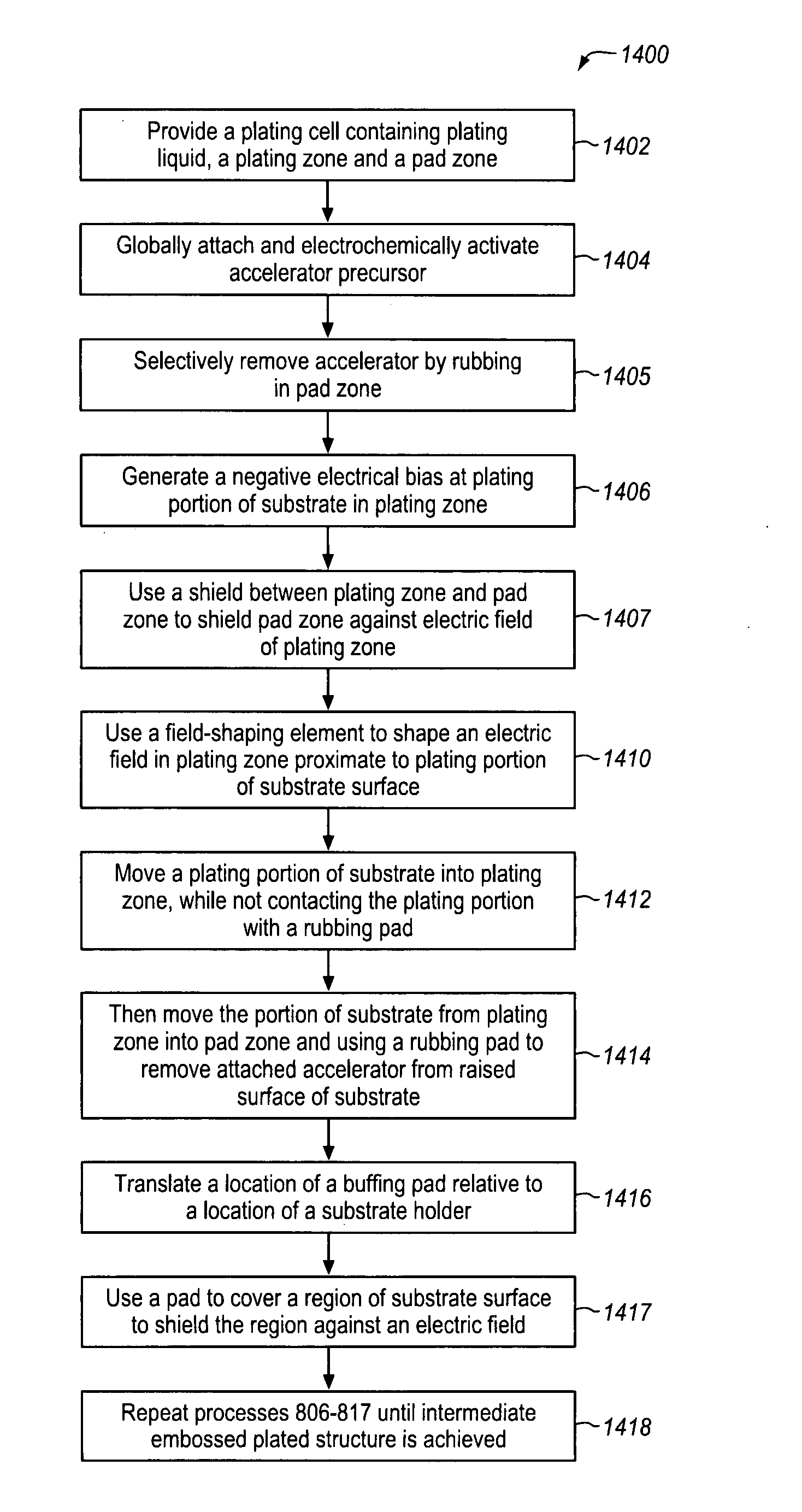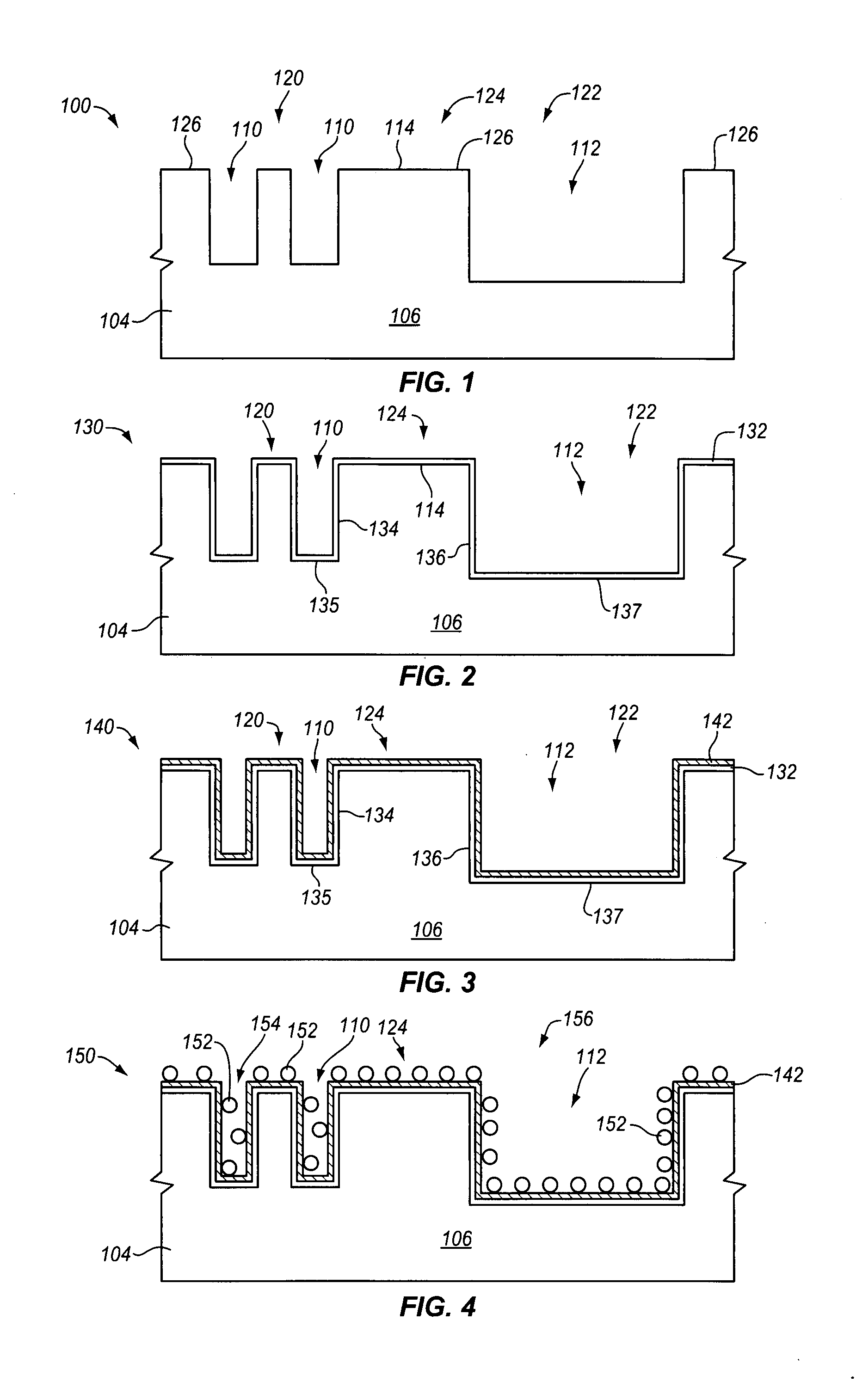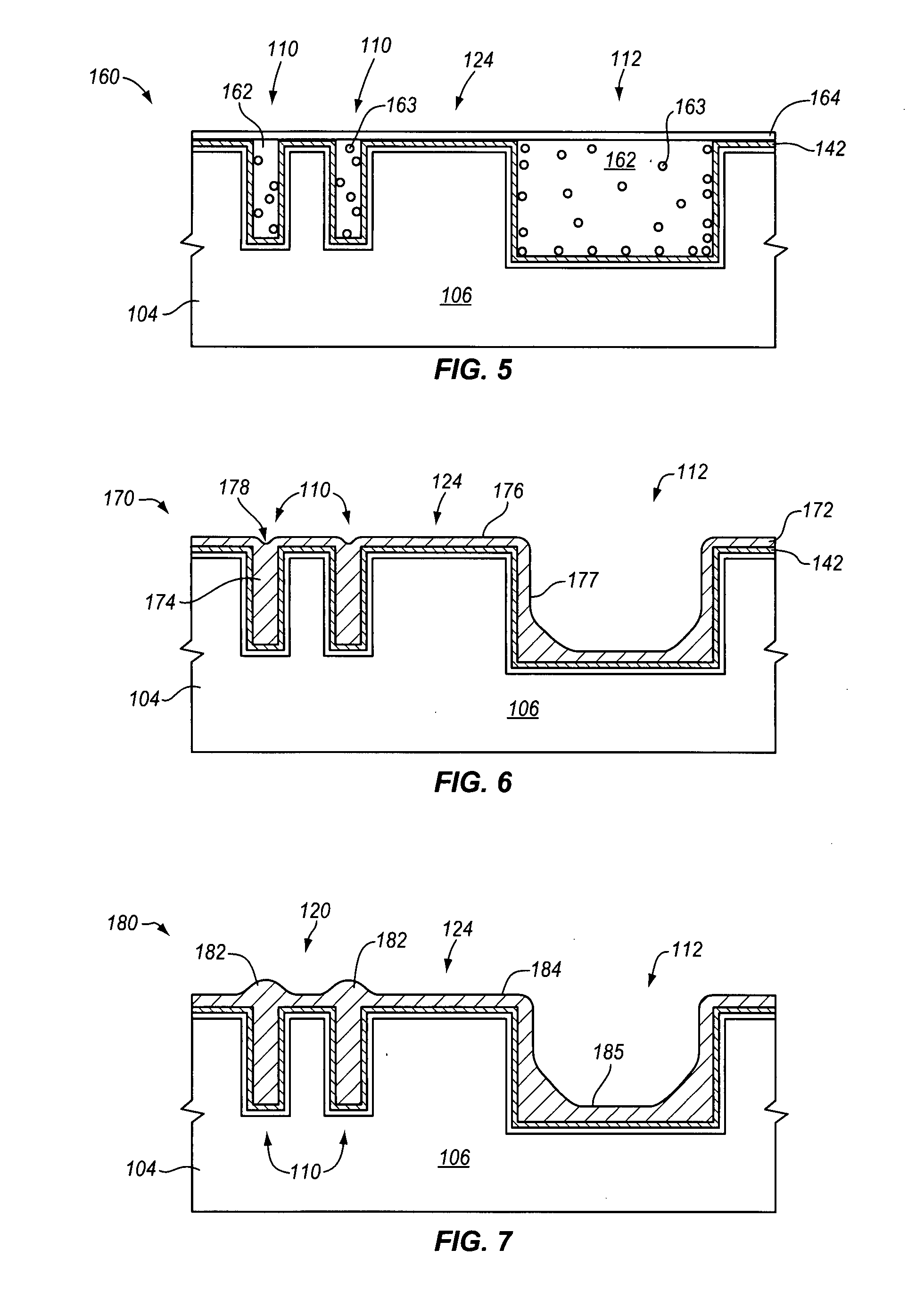Topography reduction and control by selective accelerator removal
- Summary
- Abstract
- Description
- Claims
- Application Information
AI Technical Summary
Benefits of technology
Problems solved by technology
Method used
Image
Examples
example 1
[0242]Accelerator removal tests were performed on a central section of a number of 300 mm thermal-oxide coated silicon wafers using an apparatus 800 as depicted in FIG. 39. Each silicon wafer had a 150 Å tantalum barrier / adhesion layer and a 1000 Å copper PVD seed. Each wafer was “pre-electroplated” in a SABRE® plating tool available from Novellus Systems, Inc. The pre-electroplating was performed at a charge density of 0.32 C / cm2 (at approximately 1200 Å) in a copper plating bath containing additives and electrolytes for filling 35 nm narrow-cavity features having an aspect ratio exceeding 4:1. The pre-plating step is useful for simulating and elucidating the abrasion interactions between a pad and the metal micro-topography and roughness that generally are present on a surface after a narrow-feature (HAR) metal deposition / filling operation. Prior to global accelerator application, the wafer was etched (etch rate about 1000 Å / min) to remove residual plating bath adsorbates / levelers...
example 2
[0268]Localized metal etching in accordance with the invention was performed to remove copper from a series of 200 mm semiconductor wafers using an etching solution in accordance with the invention together with a diluent (deionized water) or one of various quenching solutions. Liquid etchant was dispensed onto a wafer that was rotating at 500 rpm at a location about 50 mm from the wafer center. The liquid etchant was dispensed for 30 seconds at a flow rate of 40 milliliters per minute (ml / min) through an applicator nozzle having a diameter of 0.02 inches (0.51 mm). The etchant liquid comprised an etching solution containing 5 g / L of 30 weight percent (wt %) H2O2 and 4 g / L glycine. Concurrently, diluent or quenching liquid was dispensed for 30 seconds at a flow rate of 150 ml / min through a quench nozzle having a diameter of 0.03 inches (0.76 mm). The quench nozzle was located next to the etchant applicator nozzle, 0.43 inches (about 11 mm) radially outwards from the applicator nozzl...
example 3
[0270]A localized etching procedure in accordance with the invention was conducted to remove copper from 200 mm semiconductor wafers under conditions similar to those described above in Example 2 to demonstrate the effect of diluent flowrate on localized copper removal.
[0271]As in Example 2, liquid etchant was dispensed onto a wafer that was rotating at 500 rpm at a location about 50 mm from the wafer center. The liquid etchant was dispensed for 30 seconds at a flow rate of 40 ml / min through an applicator nozzle having a diameter of 0.02 inches (0.51 mm). The etchant liquid comprised an etching solution containing 5 g / L of 30 weight percent (% wt.) H2O2 and 4 g / L glycine. Concurrently, deionized water was dispensed for 30 seconds at a flow rate of 2700 ml / min through a quench nozzle having a diameter of 0.156 inches (4.0 mm). The quench nozzle was located next to the etchant applicator nozzle, 0.43 inches (about 11 mm) radially outwards from the applicator nozzle.
[0272]After applica...
PUM
| Property | Measurement | Unit |
|---|---|---|
| Area | aaaaa | aaaaa |
Abstract
Description
Claims
Application Information
 Login to View More
Login to View More - R&D
- Intellectual Property
- Life Sciences
- Materials
- Tech Scout
- Unparalleled Data Quality
- Higher Quality Content
- 60% Fewer Hallucinations
Browse by: Latest US Patents, China's latest patents, Technical Efficacy Thesaurus, Application Domain, Technology Topic, Popular Technical Reports.
© 2025 PatSnap. All rights reserved.Legal|Privacy policy|Modern Slavery Act Transparency Statement|Sitemap|About US| Contact US: help@patsnap.com



